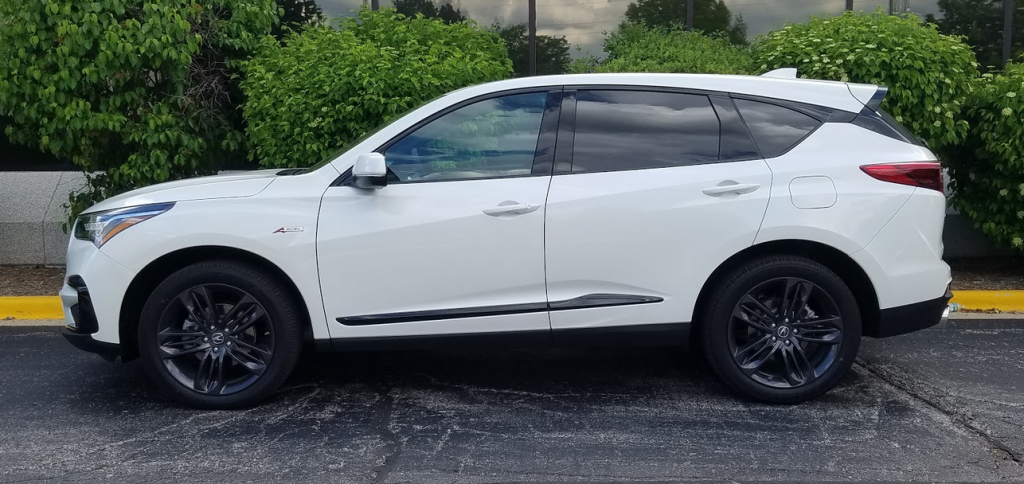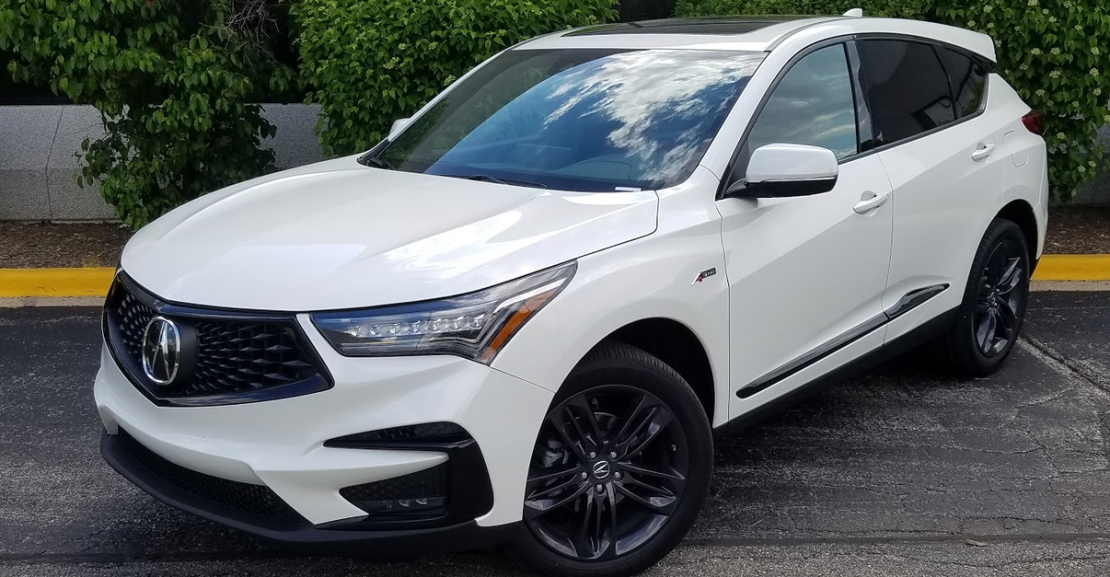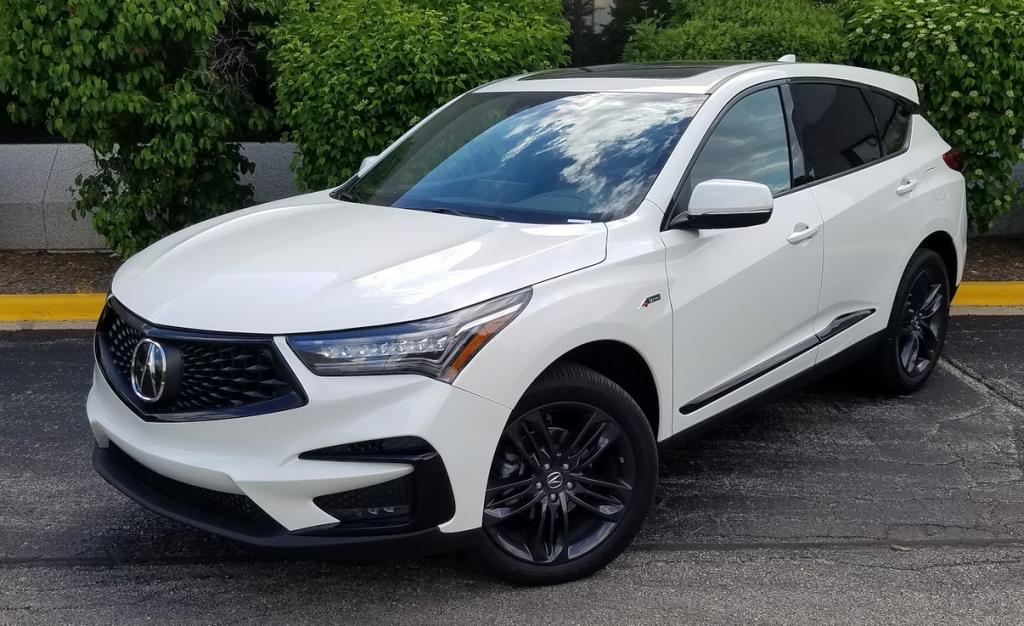
 2019 Acura RDX A-Spec SH-AWD
2019 Acura RDX A-Spec SH-AWD
Class: Premium Compact Crossover
Miles driven: 635
Fuel used: 27.0 gallons
Real-world fuel economy: 23.5 mpg
Driving mix: 10% city, 90% highway
EPA-estimated fuel economy: 21/26/23 (city/highway/combined)
| CG Report Card | |
|---|---|
| Room and Comfort | A- |
| Power and Performance | B |
| Fit and Finish | B |
| Fuel Economy | B |
| Value | B+ |
| Report-card grades are derived from a consensus of test-driver evaluations. All grades are versus other vehicles in the same class. Value grade is for specific trim level evaluated, and may not reflect Consumer Guide's impressions of the entire model lineup. | |
| Big & Tall Comfort | |
| Big Guy | B |
| Tall Guy | A |
| Big & Tall comfort ratings are for front seats only. "Big" rating based on male tester weighing approximately 350 pounds, "Tall" rating based on 6'6"-tall male tester. | |
Base price: $45,500 (not including $995 destination charge)
Options on test vehicle: None
Price as tested: $46,495
Quick Hits
The great: Excellent driving manners blend athletic handling with a comfortable ride; generous interior space for the class
The good: High-end interior trimmings; satisfying acceleration; smooth-shifting transmission
The not so good: A few quirky controls might turn off some shoppers
More Acura price and availability information
John Biel
Four days and 635 miles ought to be enough to get a good feel for the quirks and capabilities of a particular vehicle—say the 2019 Acura RDX. However, the copy of the redesigned premium compact sport-utility that Consumer Guide® sampled didn’t wait but about five minutes and just past the first mile down the road to do something impressive.
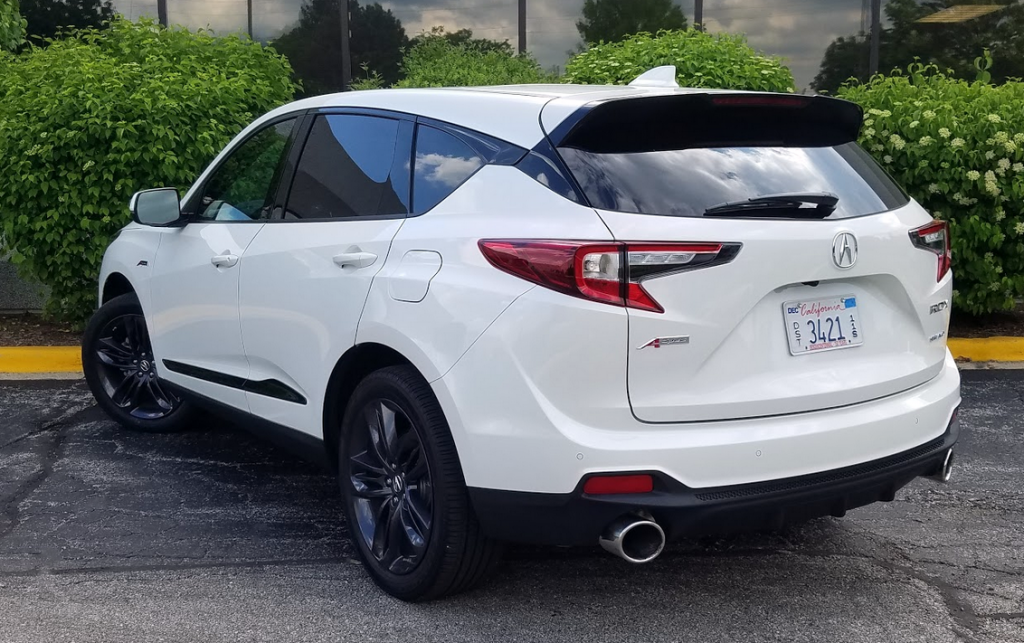
Bound for home and with CG Supreme World Headquarters barely faded from the rearview mirror, this driver started the tight right-hand turn around a small traffic island that he makes almost every workday. This time, though, there was a sensation of something switching on to improve the precision and ease of the turning process, a gentle push in the desired direction.
That was the work of “Agile Handling Assist,” a system that applies braking to inside wheels in such situations to generate added turning force and reduce understeer. In all-wheel-drive models like the test vehicle, Agile Handling works in tandem with Acura’s torque-vectoring “Super-Handling All-Wheel Drive” (SH-AWD) to maximize handling and traction. The third-generation RDX adds the latest version of SH-AWD, but the engine, transmission, styling, and infotainment interface are new too.
Test Drive: 2017 Mercedes-Benz AMG GLC43
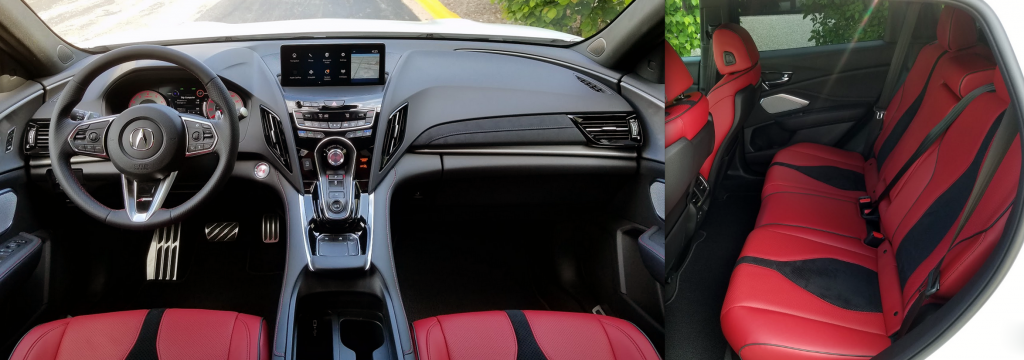
The ’19 RDX entrusted to our care had the A-Spec sport-appearance package. It is the first Acura SUV with this trim, which includes Shark Gray 20-inch alloy wheels wrapped in 255/45R20 tires, gloss-black exterior accents, large-diameter dual exhaust finishers, and LED fog lights. The interior has leather sports seats in red or black with black Ultrasuede inserts, black Ultrasuede dash-panel insert above the glove-box door, perforated-leather steering-wheel wrap, larger paddle shifters, metal pedals, dials with a brushed-metal look and red accents, red interior illumination, dark-tinted brushed-aluminum interior accents, and A-Spec badging. With delivery, the AWD A-Spec sells for $46,495.
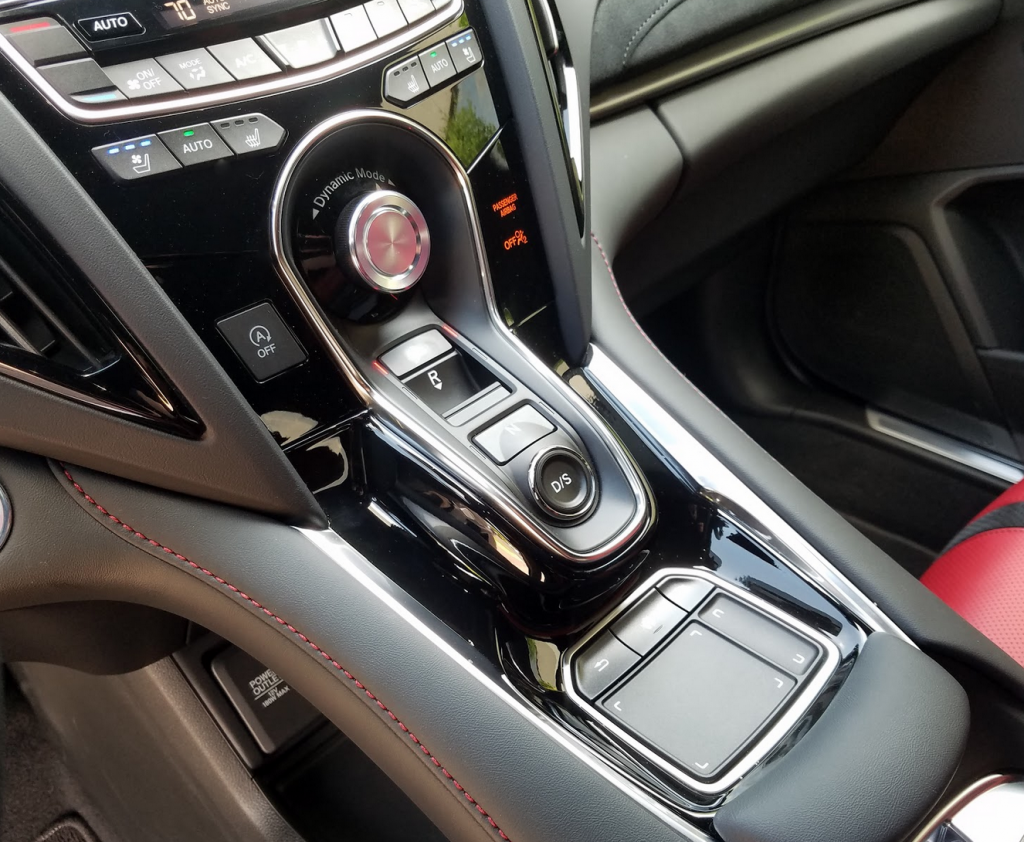
A turbocharged 2.0-liter 4-cylinder engine is the new RDX powerplant. It makes almost as much horsepower—272—as the 3.5-liter V6 it replaces, but peak torque of 280 lb-ft. is higher than in the old engine. Plus, Acura points out, it outpowers key luxury-class competitors from Audi, BMW, Mercedes-Benz, and Volvo with similar engines. If the RDX’s power output falls short of startling, it’s still very good with virtually no turbo lag and a steady flow of go on the way up to highway-cruising speeds. All of this is aided and abetted by a very smooth 10-speed automatic transmission. This driver’s test revolved around a Chicago-Detroit trip steeped in sustained high-speed Interstate-highway miles, which the RDX handled with quiet and calm.
EPA fuel-economy estimates for the test vehicle were 21 mpg in the city, 26 on the highway, and 23 combined. (A-Specs are rated one mpg lower on the highway than other RDX models.) Due to the nature of the weekend trip, just 10 percent of total test miles were in city-style driving. Three fill-ups resulted in an aggregate 23.5 mpg. (Oddly, the shortest and most “citified” segment got the best mileage—26.5 mpg.)
Ride quality throughout our test was extremely good. The new RDX platform has a 2.6-inch-longer wheelbase, wider front and rear wheel tracks, and a redesigned 5-link independent rear suspension—all of which help. A series of drive modes—“Snow,” “Comfort,” “Sport,” and “Sport+”—ratchet up damping and steering efforts. Comfort is hardly flabby, and will be fine for most drivers’ needs most of the time. At the same time, neither of the Sport modes is overly stiff. There was barely a whiff of vibration through the steering column.
Test Drive: 2017 Jaguar F-Pace 20d Diesel
Mention of drive-mode control is a handy segue to the topic of controls—some weird and some wonderful. The mode-selector dial is on the vertical face of the instrument-panel center stack. Just below it is the Honda/Acura automatic-transmission control, which consists of push buttons for Park, Neutral, and Drive, plus a pull-back lever to activate Reverse. Further down the “floating” center console is the pad for the “True Touchpad” system. Audio, navigation, and other system displays show up on a colorful 10.2-inch screen perched atop the dash, but the systems are managed through the central touchpad. This confirmed central-controller skeptic had to admit it works all right once you get used to the idea that what you see on the screen corresponds to roughly the same spot on the touchpad. If the screen “button” you’d like to activate is at the lower right, then tap the lower right of the pad, etc. There’s no dragging a fingertip or manipulating a mouse across the active control area while attempting to drive. Though it might have been faster to try voice commands, this driver and his official test spouse used the pad to type addresses into the nav system, which, by the way, works well and quickly.
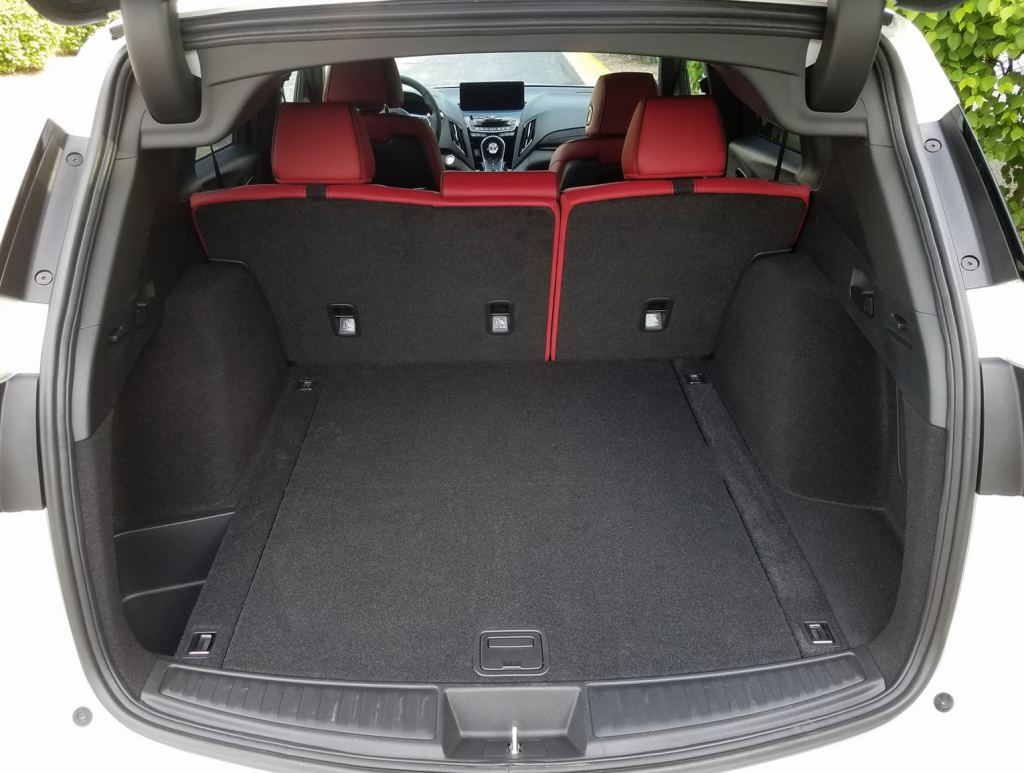
The test truck’s red seats not only enlivened the mostly black interior, they also delivered top-shelf comfort for long drives. Soft surfaces are abundant on the dash, door panels, and even the sides of the console in the tastefully finished space. There’s a sense of openness to the cabin, with good leg- and headroom in both rows—a function of the new model’s larger dimensions. Three adults could fit comfortably across the rear seat. Driver vision is fairly good to all areas except where the rear quarters rise to meet the rear roof pillars.
The flat-floored cargo area held a weekend bag and a soft-sided medium suitcase with room to spare. (The redesign adds 3.4 cubic feet to the RDX’s cargo bay.) A 1.7-cubic-foot bin rests under the floor mat. Rear seats are split 60/40 and fold fully flat to create lots more load space. Personal-item storage options are better in front than they are in the second row. The open area under the angled console creates a handy stash for a purse, snacks, or small shopping bags.
Styling and engineering for the new-generation RDX were done in the U.S., where crossover SUVs are vigorously ascendant, so it seems that Acura was keeping its ear to the ground closest to the target audience during development. You may like what they heard.
